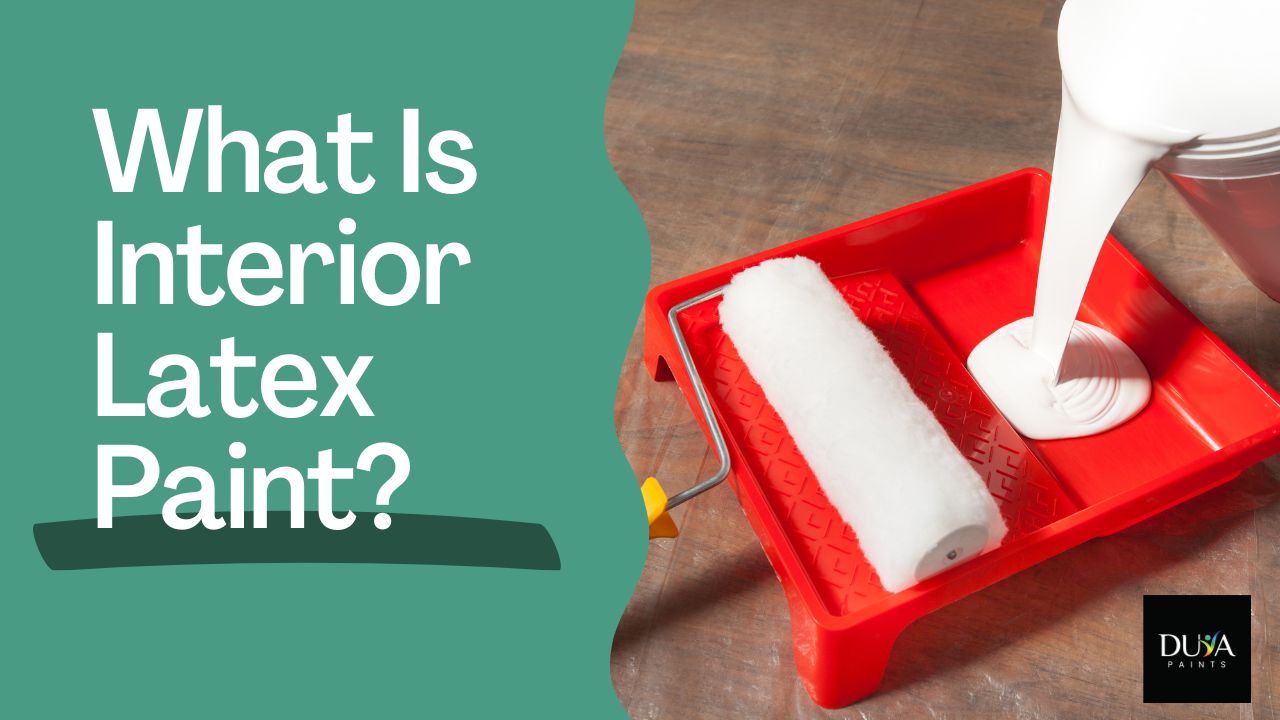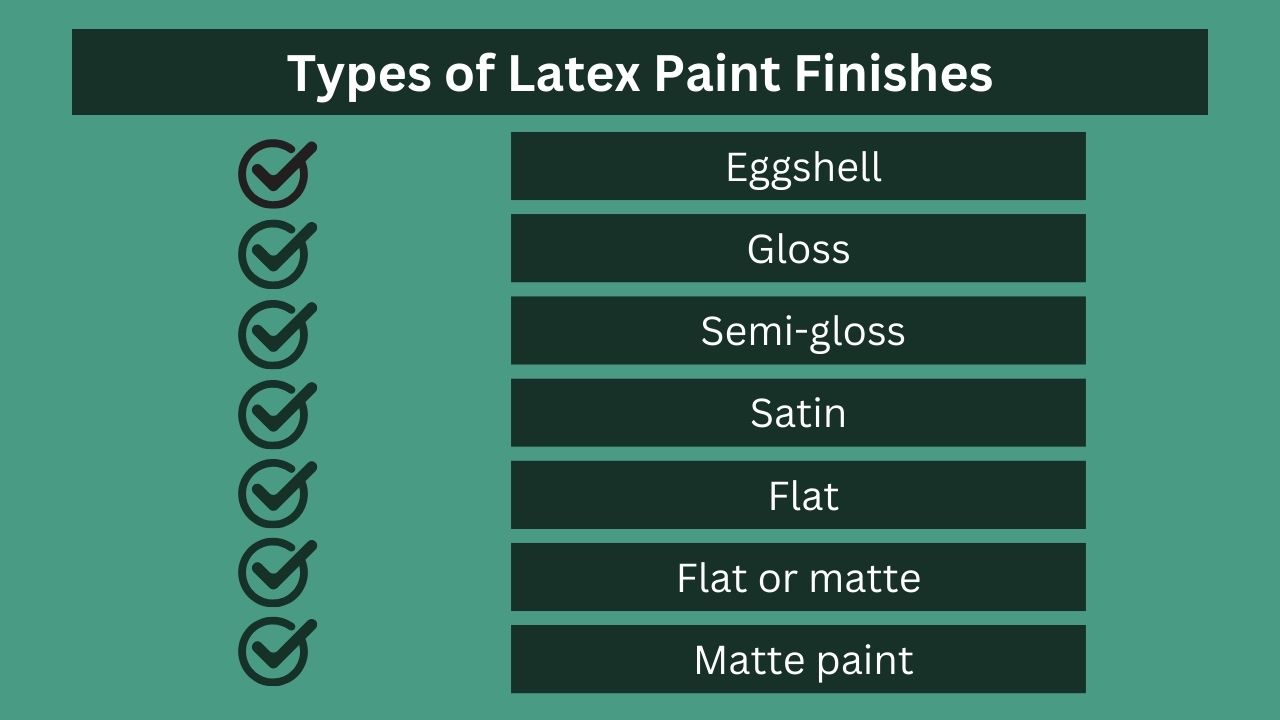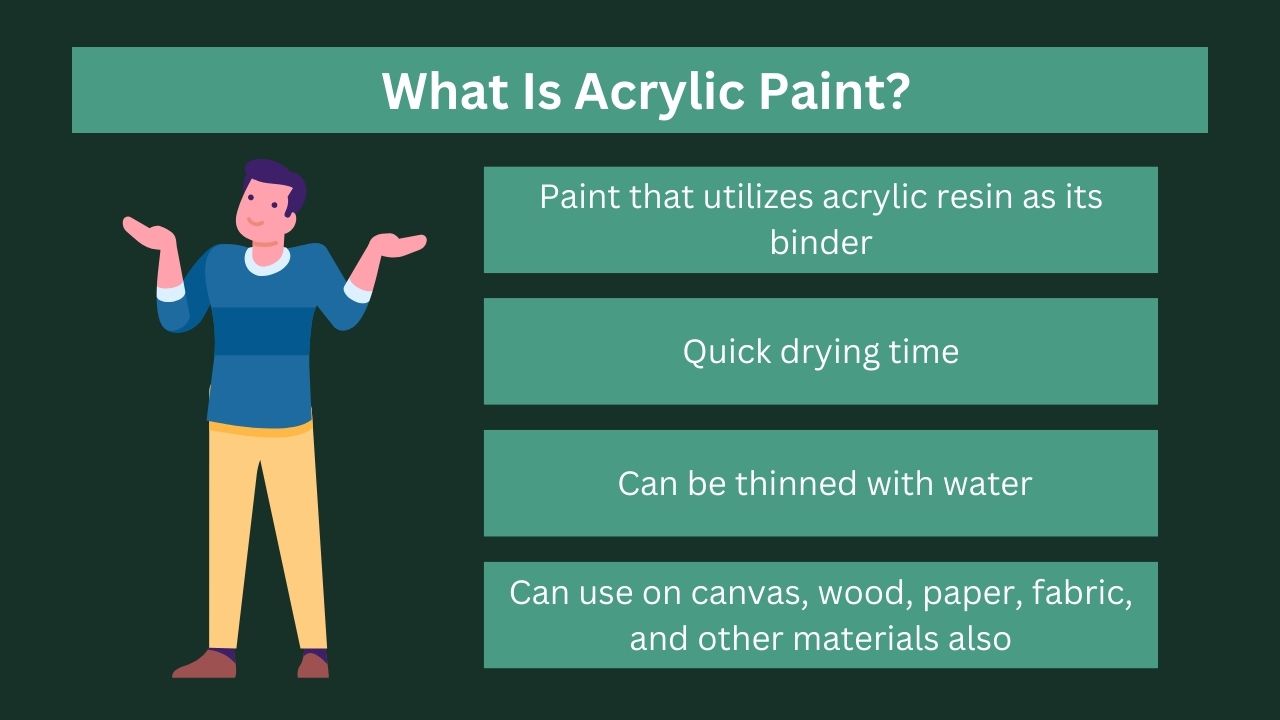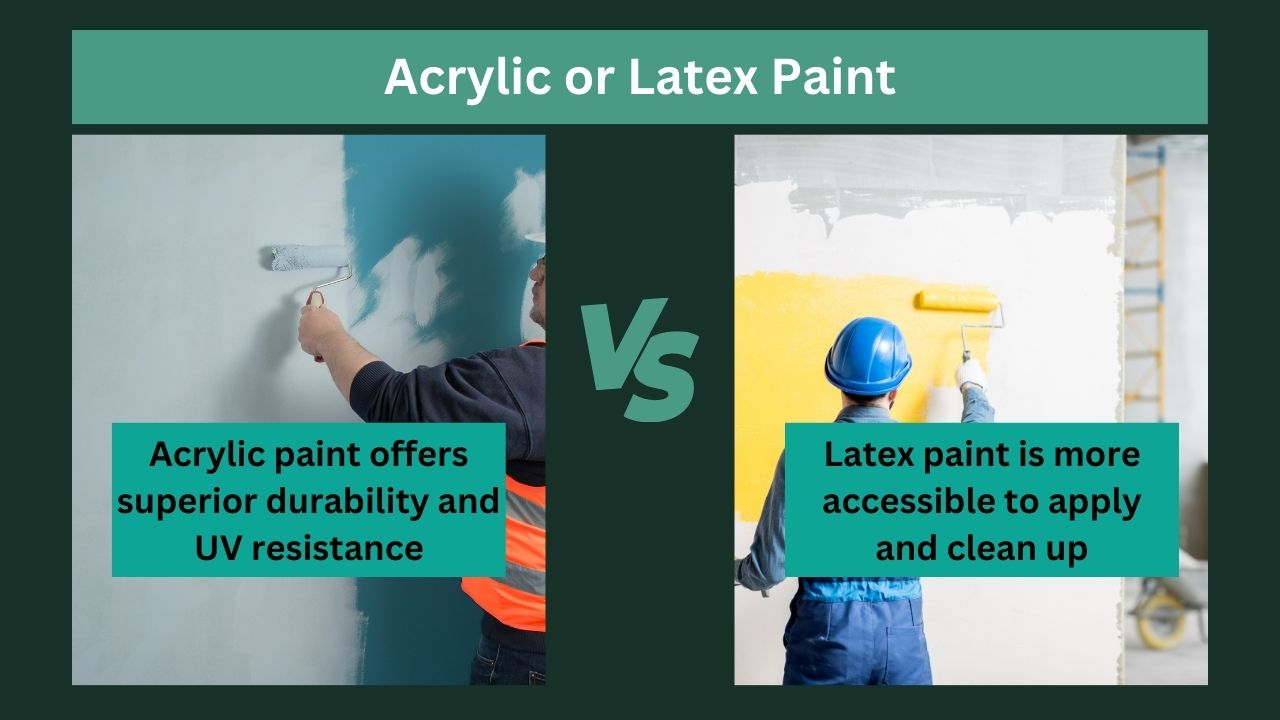What Is Interior Latex Paint?

Interior latex paint, or acrylic latex paint, is a versatile water-based paint widely used for interior wall surfaces due to its durability, ease of application, and quick drying properties. It utilizes acrylic resin as its primary binding agent.
Latex paint, a water-based option like acrylic, utilizes acrylic resin. It’s preferred for larger projects not due to slower drying times but because it’s commonly bought in bulk.
In this article, we delve into the characteristics, benefits, and applications of interior latex paint, exploring why it’s a preferred choice for enhancing indoor spaces with its durability, versatility, and ease of use.
Composition of Latex Paint
Latex paint consists of several key components, including acrylic resin particles suspended in water, pigments for coloration, additives for improving flow and durability, and often small amounts of biocides to prevent mold and mildew growth. The water in latex paint is a carrier for these components and evaporates as the paint dries, leaving a solid acrylic film on the painted surface.

Types of Latex Paint Finishes
There are several types of latex paint finishes available, each offering different aesthetic and functional benefits:

- Eggshell: The eggshell finish has a slight sheen, like an eggshell, providing a subtle, smooth appearance suitable for living spaces.
- Gloss: A gloss finish is highly reflective and durable. It is often used on trim and doors for a shiny, polished look.
- Semi-gloss: Semi-gloss finish offers some shine and is moisture-resistant, making it ideal for kitchens and bathrooms.
- Satin: The satin finish has a soft sheen that enhances washability and is suitable for high-traffic areas like hallways and children’s rooms.
- Flat: Flat finish is non-reflective, hides imperfections on walls, and is ideal for ceilings and low-traffic areas.
- Flat or matte: Flat or matte paint has no shine, offering a velvety appearance that hides flaws and suits formal rooms.
- Matte paint: Matte paint offers a flat, non-reflective finish, perfect for creating a serene atmosphere in bedrooms and living rooms.
What Is Acrylic Paint?

Acrylic paint is a versatile and widely used type of paint that utilizes acrylic resin as its binder. It is known for its quick drying time and ability to create vibrant, durable, and flexible finishes on various surfaces. Acrylic paint can be thinned with water or mixed with mediums to achieve different textures and effects, making it popular among artists, hobbyists, and DIY enthusiasts for artistic and practical applications. It is available in various colors and finishes and is suitable for use on canvas, wood, paper, fabric, and other materials.

Types of Acrylic Paint
Let’s look at the various types of acrylic paint finishes, each offering unique benefits for different projects:
- Artist Grade Acrylics: These are top-quality paints with intense pigment levels, perfect for professional artists seeking vibrant colors and longevity.
- Student Grade Acrylics: Designed for beginners and students, these paints offer a balance of quality and affordability, which is ideal for learning and practicing techniques.
- Craft Acrylics: Versatile paints for DIY projects and crafts are available in various colors and finishes for creative versatility.
- Heavy Body Acrylics: These paints have a thick consistency, are ideal for creating textured effects and building up layers, and are favored by artists for impasto techniques.
- Fluid Acrylics: These are liquid acrylic paints that flow easily, perfect for pouring techniques and intricate detail work in mixed-media art.
- Acrylic Inks: Highly pigmented inks used for fine details and mixed media projects, offering intense colors and precision in application.
- Soft Body Acrylics: These paints have a creamy consistency between heavy body and fluid acrylics, offering smooth application and blending capabilities for various artistic styles.
I’ve found a great forum on Garage Journal for you. It discusses the best value interior latex paint, making it easier for you to choose. Check it out for some useful tips!
Also Read Can you Use Interior Paint Outside
Acrylic Vs. Latex Paint For Interior Walls
Let’s explore how acrylic and latex paints differ from each other for interior walls.
Cost Considerations
Compare the cost of materials and application when budgeting for your painting project:
- Cost of Materials: Acrylic paints may be more expensive upfront due to their higher pigment concentration and durability.
- Cost of Application: Factor in labor costs and application time, considering the efficiency and ease of use of acrylic and latex paints.
Suitability for Different Environments
Consider the specific requirements of your painting project when choosing between acrylic and latex paints:
- Interior Applications: Latex paint is typically recommended for interior walls inside homes due to its ease of use and environmental benefits.
- Exterior Applications: For exterior projects, acrylic paint’s durability and resistance to UV rays make it my preferred choice for surfaces exposed to harsh weather conditions.
Environmental Impacts
Understanding the environmental impacts of acrylic and latex paints helps make informed choices for sustainable painting practices.

Acrylic Paint
- Volatile Organic Compounds (VOCs): Traditional acrylic paints can contain higher levels of VOCs, which contribute to air pollution and indoor air quality concerns.
- Disposal: If not handled properly, waste disposal of acrylic paint may involve harmful chemicals, impacting soil and water quality.

Latex Paint
- Low VOC Emissions: Latex paints typically have lower VOC emissions than acrylics, leading to better indoor air quality and reduced environmental impact.
- Water-Based: Latex paints are easier to clean up and have less impact on water sources than solvent-based paints.
- Biodegradability: Latex paints are generally more biodegradable than acrylics, posing fewer long-term environmental concerns.
Another forum at your service! This Trawler Forum thread discusses using latex paint for interiors. I hope it makes your search easier and provides useful insights.
Do you know : How to Paint an Interior Door Like a Professional?
Advantages of Acrylic Paint
Acrylic paint offers a range of advantages, making it a versatile choice for artistic and practical applications.
- Durability: It forms a tough, flexible film that resists cracking and peeling, making it great for both indoor and outdoor projects.
- Color Retention: I’ve noticed it maintains vibrant colors and doesn’t fade quickly under sunlight, perfect for long-lasting outdoor surfaces.
- Versatility: It’s incredibly versatile and suitable for painting on various surfaces like canvas, wood, and metal, which is fantastic for my artistic and DIY projects.
- Fast Drying Time: I appreciate how quickly it dries to the touch, allowing me to apply multiple layers or add intricate details without waiting too long.
- Water-Based: Cleanup is a breeze with just water and minimal odor, making it ideal for indoor use without harsh chemicals.
- Ease of Mixing: Mixing different acrylic paints or mediums is easy, allowing me to effortlessly create custom colors and unique effects.
- Non-Toxic: I feel safer using it because it’s generally non-toxic when used as directed, which is essential for my arts and crafts projects.
Advantages of Latex Paint
Latex paint offers several advantages that make it a popular choice for painting projects, especially when I’m looking for ease of application, drying time, and better indoor air quality.
- Ease of Application: Latex paint goes on smoothly and evenly, making it easier for me to achieve a professional finish, especially for my DIY projects.
- Quick Drying: It dries quickly, usually within a few hours, which allows me to complete painting projects faster.
- Low VOC Emissions: I’ve noticed that latex paints emit fewer volatile organic compounds (VOCs) than oil-based paints, which helps maintain better indoor air quality.
- Easy Cleanup: The water-based formula allows easy cleanup with water and soap, so I don’t need harsh solvents.
- Wide Range of Finishes: I appreciate the variety of finishes available, from matte to high gloss, catering to different aesthetic preferences and functional needs.
- Environmentally Friendly: I often choose low-VOC and zero-VOC options, which reduce environmental impact and promote sustainability.
- Resistant to Mildew: Many latex paints I use include additives that resist mold and mildew growth, making them ideal for humid environments like bathrooms and kitchens.
Choosing Between Acrylic and Latex

When deciding between acrylic and latex paints for interior walls, consider factors such as:
- Durability and Longevity: Acrylic paint offers superior durability and UV resistance, making it suitable for high-traffic areas and exterior surfaces.
- Ease of Application: Latex paint is more accessible to apply and clean up, making it ideal for DIY projects and indoor renovations.
Conclusion
Latex paint, similar to acrylic but water-based, contains acrylic resin and is favored for larger projects not because it dries slower but because it’s often purchased in bulk quantities. This makes it convenient to cover extensive areas efficiently without compromising quality or finish. Its water-based nature also ensures easier cleanup and lower odor, making it a practical choice for both professional painters and DIY enthusiasts tackling big jobs.
